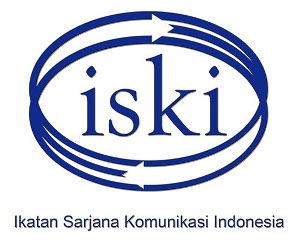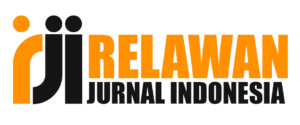Public Technological Acceptance Of The Use on Artificial Intelligence as News Anchor in TV One Indonesia
Abstract
The development in communication technology, marked by innovation in artificial intelligence (AI), is entering a new phase in its application in mass media. One can be seen in using this technology as a news anchor on TV One AI. Because this is something new in Indonesia, public acceptance of this innovation needs to be studied further.
This research uses a qualitative approach with a constructivist paradigm and descriptive methods. Technique. This research took a purposive sample by conducting semi-structured interviews with TV One AI news program viewers.
The research findings show that when viewed from the audience reception model proposed by Hall, the audience is in a position of dominant hegemony and negotiation. These two positions show that the AI TV One news presenter can be accepted by the Indonesian people while considering the opposing sides that may become threats in the future. It is hoped that the audience will be inquisitive about news programs using artificial intelligence in Indonesia, which will only partially eliminate the role of news anchors as journalists. Innovation is expected to be carried out gradually from one field to another as a form of introduction and use of artificial intelligence in the media realm in Indonesia.
Keywords
Full Text:
PDFReferences
Ajif, P. (2013). Pola Jaringan Sosial pada Industri Kecil Rambut Palsu di Desa Karangbanjar, Kecamatan Bojongsari, Kabupaten Purbalingga. Jurnal Penelitian, 31–40. https://eprints.uny.ac.id/18100/5/BAB III 09.10.033 Aji p.pdf
Ali, W., & Hassoun, M. (2019). Artificial Intelligence and Automated Journalism: Contemporary Challenges and New Opportunities. International Journal of Media, Journalism and Mass Communications, 5(1), 40–49. https://doi.org/10.20431/2454-9479.0501004
Astuti, Y. D. (2020). Wajah Opini Publik di Media Massa.
Basri, A. I. (2022). Bahan Ajar Ekonomi Kreatif. 1, 1–153.
Disemadi, H. S. (2021). Urgensi Regulasi Khusus dan Pemanfaatan Artificial Intelligence dalam Mewujudkan Perlindungan Data Pribadi di Indonesia. Jurnal Wawasan Yuridika, 5(2), 177. https://doi.org/10.25072/jwy.v5i2.460
Galloway, C. (2022, September 13). The impact of digital technology and artifial intelliganet on Human Communication. Getting attention in a Covid-Chaotic world : Digital approaches and more [Paper presentation]. International General Lecture Magister Ilmu Komunikasi Universitas Brawijaya, Malang, Jawa Timur, Indonesia.
Gora, R., & Budiana, A. (2019). Political Branding Partai Gerindra Dalam Era New Media 2.0 (Studi Kasus Political Branding Partai Politik Gerindra Melalui Web Media Digital Online). Universitas Satya Negara Indonesia, 0, 17–33.
Hadi, S. (2019). Manajemen Sarana dan Prasaran Penjasorkes di SD Negeri Kota Bengkulu. Journal of Chemical Information and Modeling, 53(9), 57.
Hazlin Falina, R. (2020). Sikap penerimaan masyarakat terhadap program televisyen bual bicara berbahasa Inggeris di Malaysia. Jurnal Kesidang, 5, 180–189.
hidayat fahrul, D. (2023). Peran Ai Terhadap Kinerja Industri Kreatif Di Indonesia. 2(7), 31–41.
Hidayat, R. (2015). Analisis Manajemen Penyiaran Di Era Teknologi Informasi (Konvergensi Media). E-Journal Universitas Paramadina, 01(01), 1–19.
Imran, H. A. (2013). Media Massa, Khalayak Media, The Audience Theory, Efek Isi Media dan Fenomena Diskursif. Jurnal Studi Komunikasi Dan Media, 16(1), 47. https://doi.org/10.31445/jskm.2012.160103
Jamaaluddin, & Indah, S. (2021). Buku Ajar Kecerdasan Buatan. Umsida Press, 121.
Jaya, H., Sabran, D., Pd, M., Ma, M., Djawad, Y. A., Sc, M., Ilham, A., Ahmar, A. S., Si, S., & Sc, M. (2018). Kecerdasan Buatan. In Journal of Chemical Information and Modeling (Vol. 53, Issue 9).
Koricanac, I. (2021). Impact of AI on the Automobile Industry in the U.S. SSRN Electronic Journal, June. https://doi.org/10.2139/ssrn.3841426
L.Toruan, N. T. (2021). Sistem Pendukung Keputusan Pemilihan Pembawa Acara Berita Terbaik Menerapkan Metode OCRA. Bulletin of Computer Science Research, 1(3), 71–78.
Landri, P., Suyanto, & Yasir. (2018). Konvergensi Media Harian Metro Riau Dalam Menghadapi Persaingan Industri Media. 1, 1–14. https://jkms.ejournal.unri.ac.id/index.php/JKMS/article/view/7345/6453
Liliana, D. Y., Nalawati, R. E., Warsuta, B., Teknik, J., Jakarta, P. N., Pertanian, F., & Brawijaya, U. (n.d.). Kajian Pemanfaatan Teknologi Artificial Intelligence Generatif dalam Aktivitas Akademik di Politeknik Negeri Jakarta. 2(1), 523–533.
Louhenapessy, M. C. K. (2016). Strategi Manajemen Produksi Program Berita Detak Melayu Di Riau Televisi. Jurnal JOM FISIP, 3(1), 1–15. https://jom.unri.ac.id/index.php/JOMFSIP/article/view/9313
Luik, J. (2020). Media Baru Sebuah Pengantar. Ilmu Komunikasi, 152hlm. http://repository.petra.ac.id/19444/3/44_Publikasi1_06002_6825
Ma, H. V., & Dennis, A. R. (2024). Who Sells Better ? Digital Human Presenter Versus Cartoon AI Presenter in. 1, 3947–3956.
McCarthy, J. (1985). What Is Artificial Intelligence Anyway. American Scientist, 73(3), 258.
McQuail, D. (2010). Denis McQuail - McQuail’s Mass Communication Theory (2010, SAGE Publications Ltd) - libgen.
Miao, F., Kozlenkova, I. V., Wang, H., Xie, T., & Palmatier, R. W. (2022). An Emerging Theory of Avatar Marketing. Journal of Marketing, 86(1), 67–90. https://doi.org/10.1177/0022242921996646
Mukrimaa, S. S., Nurdyansyah, Fahyuni, E. F., YULIA CITRA, A., Schulz, N. D., غسان, د., Taniredja, T., Faridli, E. M., & Harmianto, S. (2016). Metode Penelitian Kualitatif. In Jurnal Penelitian Pendidikan Guru Sekolah Dasar (Vol. 6, Issue August).
Nofi, & Trijayanto, D. (2017). Motif Eksistensi melalui Penggunaan Hashtag (#OOTD) di Media Sosial Instagram. Promedia, 3(Motif Eksistensi), 252–273.
Putri, D.A. (2024). Pemanfaatan artificial intelligence (AI) dalam pemberitaan TV One melalui akun youtube @TV One AI. Skripsi. Universitas Nasional
Ridwan, D & Heikal, J. (2023). Application of artificial intelligence (AI) in television industry management strategy using grounded theory analysis: A case study on TV One. Japendi, vol 4 no. 9, 918-929, https://doi.org/10.59141/japendi.v4i9.2196
DOI: http://dx.doi.org/10.30813/s:jk.v18i1.5477
Refbacks
- There are currently no refbacks.
Copyright (c) 2024 Desideria Lumongga Dwihadiah

This work is licensed under a Creative Commons Attribution-ShareAlike 4.0 International License.
Publisher
Editorial Board SEMIOTIKA: Jurnal Komunikasi
Department of Communication
Faculty of Social Science and Humanities
"UNIVERSITAS BUNDA MULIA"
Lodan Raya St No.2, North Jakarta 14430
Phone: +62 21 692 9090 ext. 348
Email: SEMIOTIKA@ubm.ac.id













